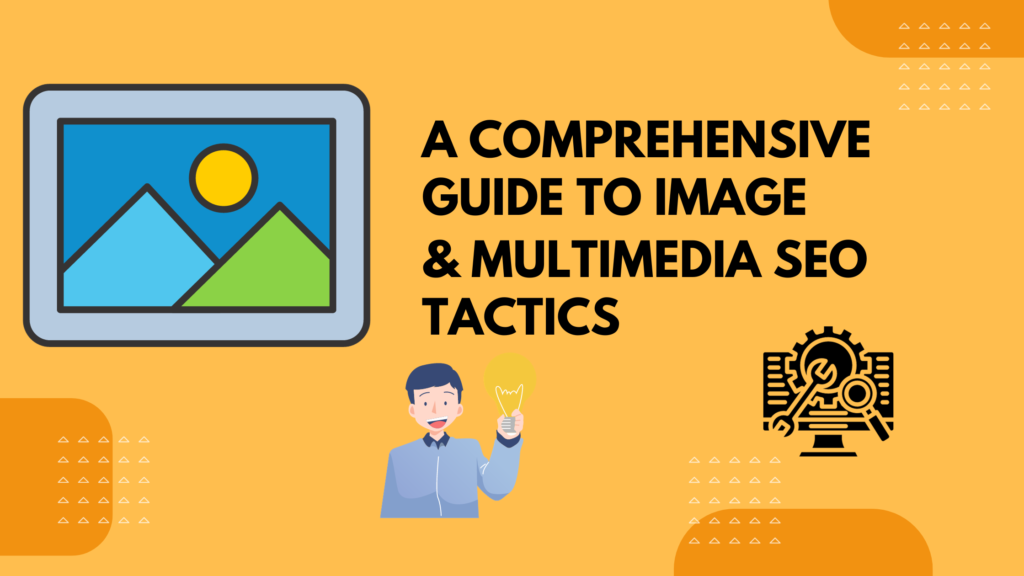In today’s digital age, the online world is flooded with images and multimedia content. From eye-catching visuals on websites to engaging videos on social media, multimedia has become an integral part of the internet experience. However, to make the most of these assets and ensure they reach the widest possible audience, you need to implement effective SEO tactics specifically tailored for images and multimedia. In this comprehensive guide, we’ll walk you through the essential strategies to optimize your multimedia content for search engines and enhance user engagement.
Image Optimization
Images are not just about aesthetics; they play a crucial role in user engagement and SEO. Here’s how you can optimize them:
- Image Alt Text: Always include descriptive alt text for images. This not only helps visually impaired users but also provides search engines with context about the image.
- File Names: Rename image files with relevant keywords before uploading them. Avoid generic names like “IMG12345.jpg.”
- Image Size: Compress images to reduce loading times, as faster loading pages are favored by search engines.
- Image Sitemaps: Create an image sitemap to help search engines index your images more effectively.
Multimedia Content Optimization
Multimedia goes beyond images, encompassing videos, audio, and other interactive elements. Here’s how to optimize them:
- Video SEO: For videos, provide a compelling title, description, and tags. Utilize video schema markup to enhance visibility in search results.
- Audio SEO: Optimize audio content with keyword-rich titles, descriptions, and transcripts.
- Interactive Content: If you have interactive multimedia, make sure it’s accessible to all users, including those with disabilities. Implement proper HTML tags and attributes.
Website Performance
Your website’s performance plays a crucial role in user engagement and SEO:
- Page Speed: Optimize your website’s speed by compressing multimedia files, utilizing content delivery networks (CDNs), and minimizing unnecessary plugins.
- Mobile Responsiveness: Ensure your multimedia content is responsive and accessible on various devices, including smartphones and tablets.
Content Quality and Relevance
Quality and relevance are key to user engagement and SEO success:
- High-Quality Content: Create multimedia content that is informative, engaging, and relevant to your audience. Quality content naturally attracts more users and backlinks.
- Keyword Research: Conduct thorough keyword research to identify the terms and phrases your target audience is searching for. Incorporate these keywords naturally into your multimedia content.
Social Media Integration
Leverage social media to amplify the reach of your multimedia content:
- Share Buttons: Include social sharing buttons on your multimedia pages to encourage users to share your content on their social networks.
- Open Graph Tags: Implement Open Graph tags to control how your content appears when shared on platforms like Facebook.
User Experience
A positive user experience is essential for retaining visitors:
- Mobile-Friendly Design: Ensure your website and multimedia content are mobile-friendly, as an increasing number of users access content on mobile devices.
- Engaging Multimedia: Use multimedia to enhance the user experience. Videos, infographics, and interactive elements can captivate your audience.
Backlinks and Outreach
Building backlinks to your multimedia content can boost its SEO performance:
- Outreach: Reach out to relevant websites and influencers in your niche to promote your multimedia content. Guest posting and collaborations can lead to valuable backlinks.
- Link Building: Create internal links within your website to direct users to your multimedia content. This also helps search engines understand the importance of these assets.
Analytics and Monitoring
Track the performance of your multimedia content:
- Analytics Tools: Use tools like Google Analytics to monitor user engagement, and conversion rates for your multimedia pages.
- SEO Tools: Employ SEO tools to monitor keyword rankings and backlinks to your multimedia content.
Stay Updated
SEO is an ever-evolving field, so stay up-to-date with the latest trends and algorithm changes:
- Industry News: Regularly read industry blogs and news sources to stay informed about SEO developments.
- Algorithm Updates: Keep an eye on major search engine algorithm updates and adjust your SEO tactics accordingly.
FAQ:-
1) What is the importance of alt text for images in SEO?
A: Alt text provides context for images to search engines, improving accessibility and helping them understand image content.
2)How can I make my multimedia content more mobile-friendly?
A: Ensure responsive design and use adaptive video players to cater to various screen sizes and devices.
3) How do I measure the success of my multimedia SEO efforts?
A: Utilize analytics tools to track user engagement, bounce rates, and conversions on multimedia pages.
4) Are there any free tools for keyword research?
A: Yes, Google’s Keyword Planner and Ubersuggest are popular free tools for keyword research.
5) What’s the significance of schema markup for video SEO?
A: Schema markup for videos enhances search results with rich snippets, improving visibility and click-through rates.
Conclusion
Optimizing your multimedia content for search engines and user engagement is a multifaceted endeavor. By following these comprehensive tactics, you can ensure that your images and multimedia assets not only look great but also perform well in search results, reaching a broader audience and maximizing your online presence. Remember, SEO is an ongoing process, so continue to refine your strategies and adapt to changing trends to stay ahead in the digital landscape.


Pingback: How can I optimize images for better SEO?